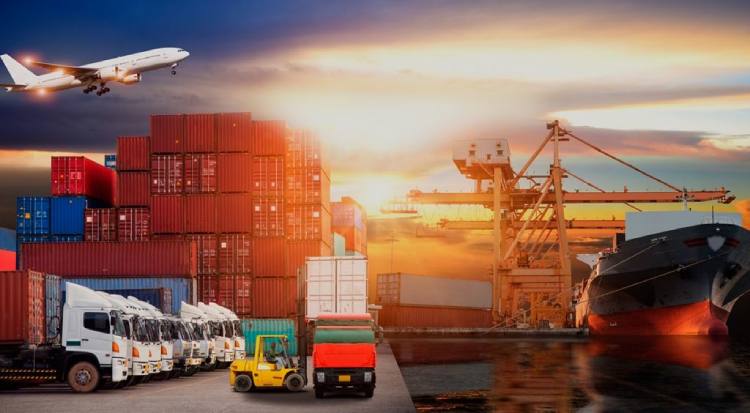Mobility Solutions for the Logistics and Transportation Sector

Mobility Solutions for the Logistics and Transportation Sector
The transportation and logistics sector moves products and services from one location to another more accessible, essential to the global economy. The need for transportation and logistics services has grown dramatically in response to the growth of e-commerce and online shopping, making it even more crucial for businesses in this sector to streamline their processes and boost productivity. Using mobility solutions is one approach to doing this.
Table of Contents
What are Mobility Solutions?
Software programs and technological resources known as “mobility solutions” allow people and businesses to access and exchange information and data from any location and on any device. Mobility solutions can aid businesses in managing their fleets, streamlining their routes, tracking shipments in real time, and generally improving operations in the transportation and logistics sector.
Benefits of Mobility Solutions for the Transportation and Logistics Industry. Using mobility solutions in the transportation and logistics sector has several advantages, such as:
1. Increased efficiency
Mobility solutions can assist businesses in streamlining operations and lowering the time and resources needed to execute activities. For instance, fleet management software can assist businesses in tracking the position and condition of their cars in real time, allowing them to plan routes and schedule drivers more effectively.
2. Cost savings
Mobility solutions can help businesses cut costs on fuel, maintenance, and other operating expenses by increasing efficiency and minimizing waste. For instance, route optimization software can assist businesses in reducing the distance that their cars cover, which can result in significant cost savings over time.
3. Improved customer service
By providing real-time information on the status of shipments, anticipated arrival dates, and other crucial information, mobility solutions can assist businesses in offering better customer service. Keeping customers informed and current can help businesses maintain customer satisfaction and loyalty.
4. Real-time tracking and monitoring
Businesses can monitor their operations in real-time using mobility solutions, allowing them to spot and resolve problems as they happen. For instance, warehouse management software can provide real-time inventory data, allowing businesses to immediately spot shortages or surpluses and modify their operations as necessary.
Types of Mobility Solutions for the Transportation and Logistics Industry
The transportation and logistics sectors frequently employ a variety of mobility solutions, including:
Fleet management software
A mobility solution called fleet management software enables businesses to track and control their cars in real time. This program enables businesses to optimize fleets and cut expenses by providing extensive information about vehicle location, speed, fuel consumption, and maintenance needs.
Route optimization software
Using information about traffic, weather, and delivery schedules, route optimization software assists businesses in planning the most effective routes for their trucks. This can assist businesses in lowering fuel expenses, cutting down on travel time, and enhancing customer service.
Warehouse management software
Real-time data on inventory levels, order processing, and shipping are provided by warehouse management software, which assists businesses in managing their operations and inventory in real time. This can lower inventory management expenses and help businesses optimize their warehouse operations.
Transportation management software
Using transportation management software, companies can manage their transportation operations, such as delivery tracking, scheduling, and routing. This can save transportation expenses for businesses and help them enhance their logistical operations.
Mobile Applications
For truckers, warehouse workers, and other staff, mobile apps offer a practical method to access information and do tasks on the go. By doing so, businesses can increase productivity and reduce the time and resources needed to execute activities.
Challenges of Implementing Mobility Solutions in the Transportation and Logistics Industry
While adopting mobility solutions in the transportation and logistics sector has many advantages, there are also several difficulties that businesses must overcome while implementing these solutions, including:
Resistance to change.
Some workers could be reluctant to adopt new technology, mainly if used to manual procedures or antiquated systems. Businesses must offer training and support to assist employees in adjusting to new systems and procedures.
Integration with legacy systems
Many businesses in the logistics and transportation sectors have legacy systems in place that may be challenging to connect with modern mobility solutions. More time and resources may be needed to guarantee that the new systems integrate seamlessly with the old infrastructure.
Data security and privacy concerns
Sensitive data, including customer information, inventory information, and delivery schedules, is gathered and shared due to mobility solutions. Businesses must ensure sufficient security measures to guard against theft or unauthorized access to this data.
Best Practices for Using Mobility Solutions in the Logistics and Transportation Sector
Companies should adhere to the following best practices to enable the successful adoption of mobility solutions in the transportation and logistics sector:
Conduct a thorough needs assessment.
Companies should thoroughly assess requirements before implementing any mobility solutions to pinpoint the precise pain spots and operational inefficiencies. This can assist them in choosing the best option and ensuring that it meets their particular requirements.
Select the right mobility solution provider.
Businesses should pick a mobility solution supplier with a successful track record in the logistics and transportation sector. Furthermore, they ought to seek suppliers who offer adaptable solutions and ongoing assistance and instruction.
Plan for training and change management.
Companies should offer thorough training and assistance, so staff members feel confident adopting new mobility solutions. To assist staff in adjusting to new procedures and systems, they should also make plans for change management.
Test and refine the solution before deployment.
Companies should test any mobility solution in a controlled environment before deploying it to ensure it functions as intended and satisfies their requirements. They should also be ready to modify the solution in response to employee and consumer input.
Future of Mobility Solutions in the Transportation and Logistics Industry
With improvements in IoT and AI technology and the ongoing development of autonomous cars, the future of mobility solutions in the transportation and logistics sector is bright. Predictive maintenance and asset management will also become more and more crucial for businesses to solve maintenance concerns before they result in downtime or operational disruptions.
Conclusion
Mobility solutions can completely transform the transportation and logistics sector by giving businesses real-time data and insights that can help them streamline their processes, cut costs, and enhance customer satisfaction. Although there are obstacles to overcome when implementing these solutions, by adhering to best practices, businesses can successfully incorporate mobility solutions into their operations and reap the rewards they offer.
Also read: Plasma Technology
Also read: Aviation Industry





